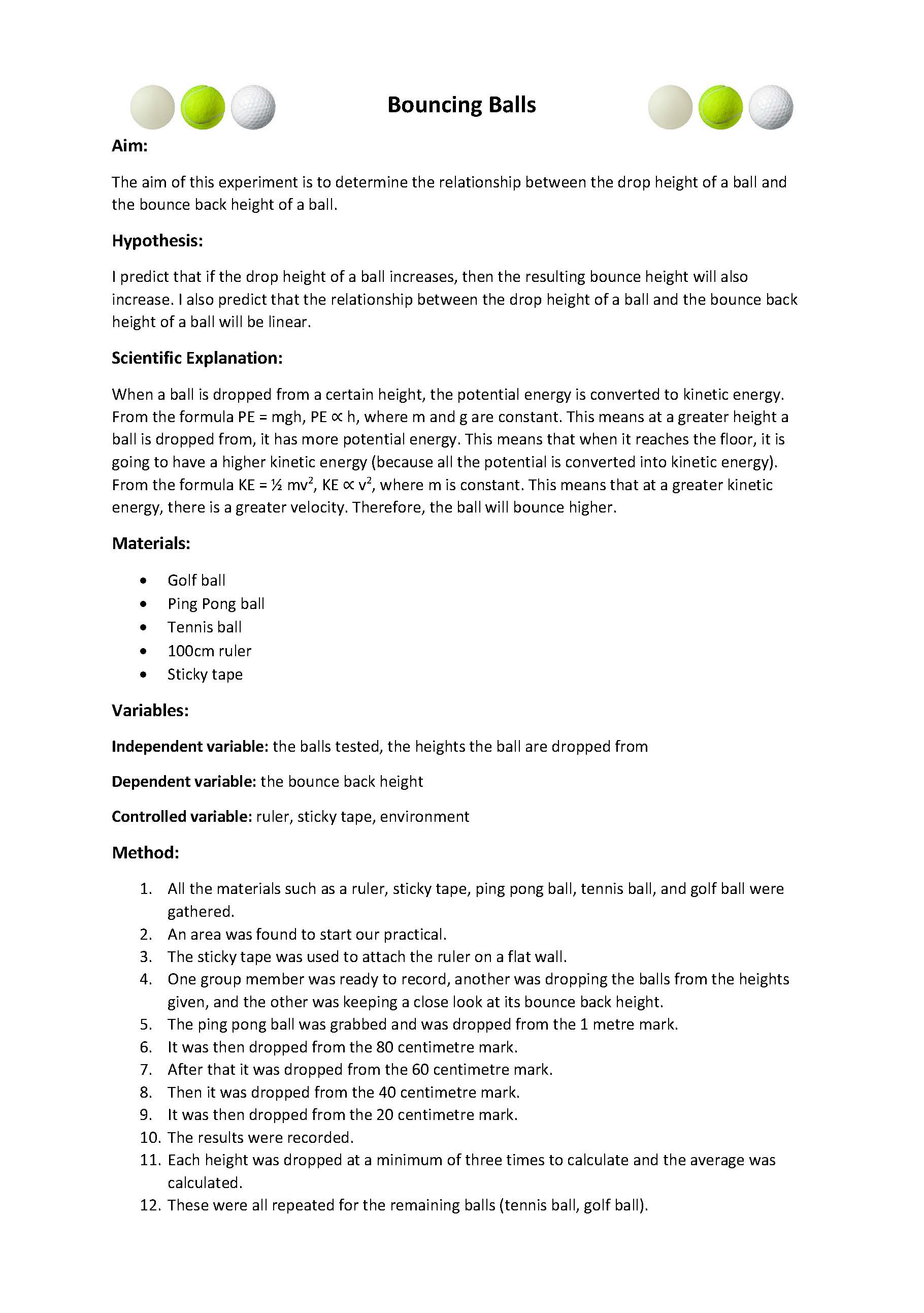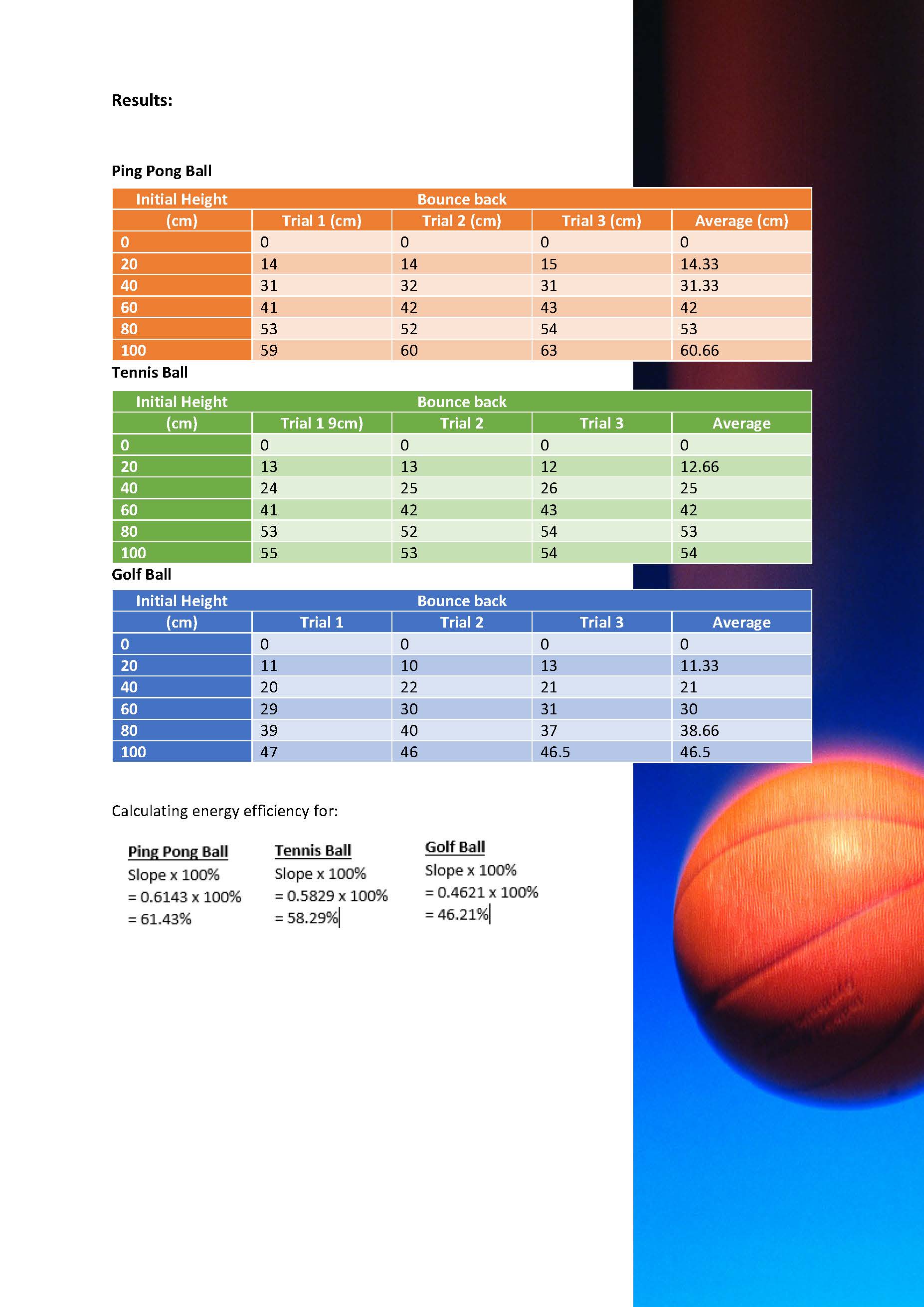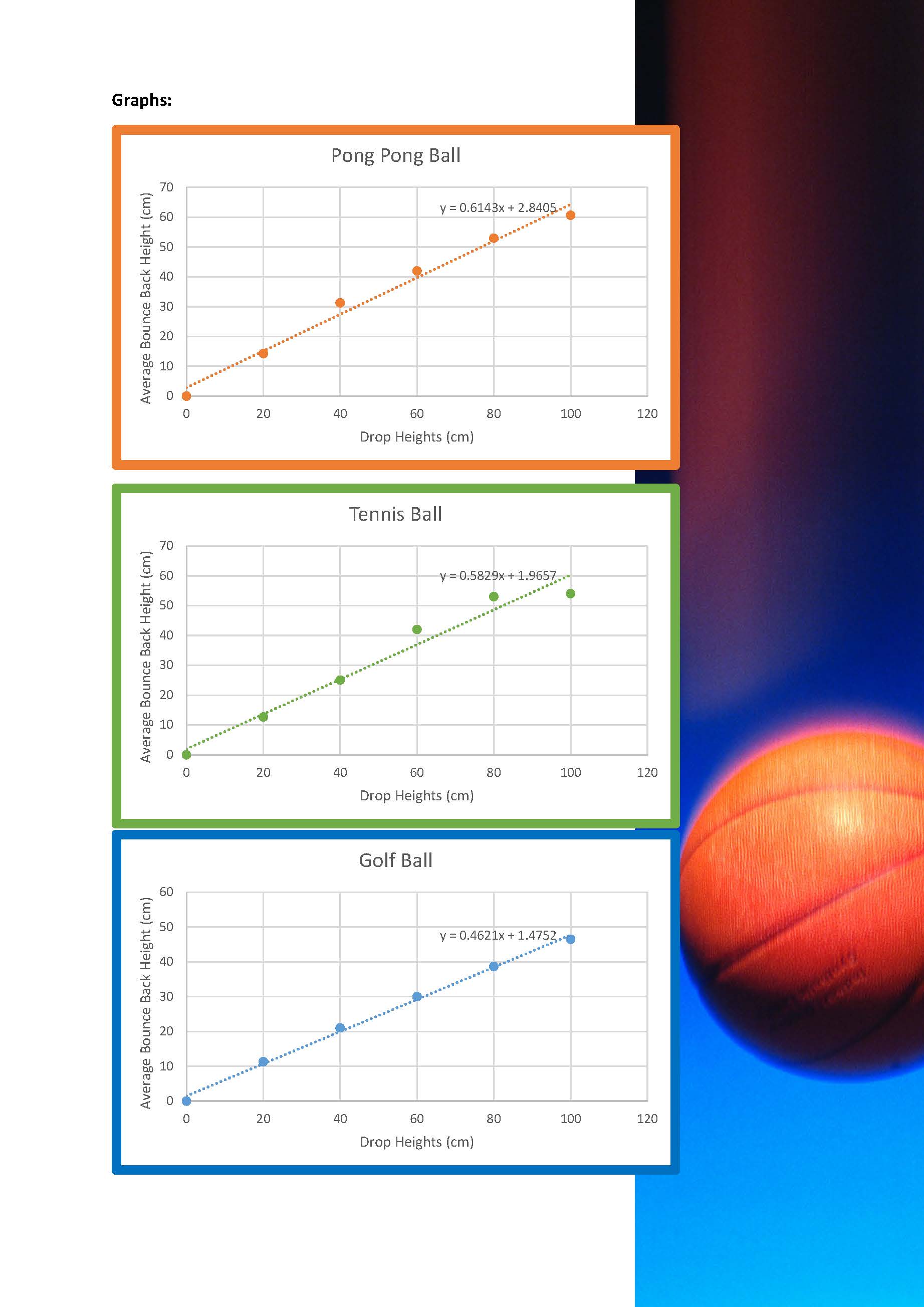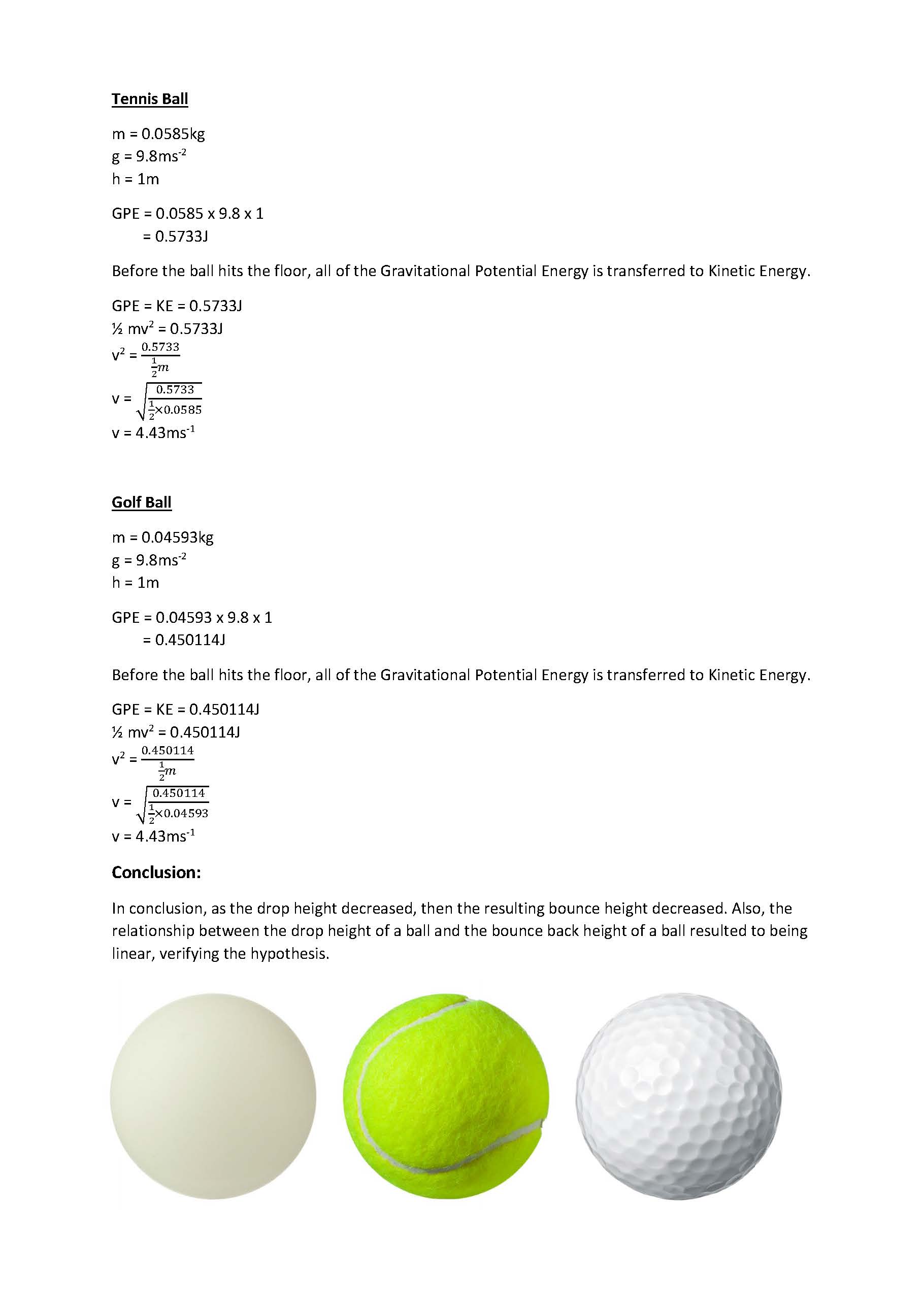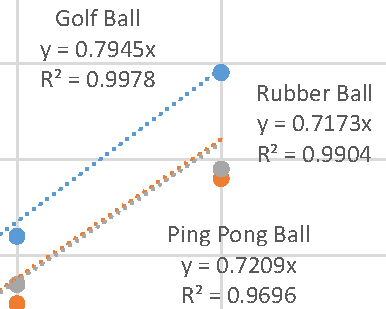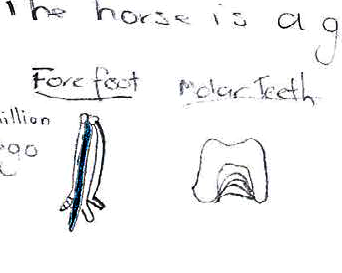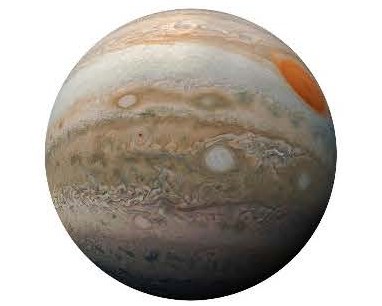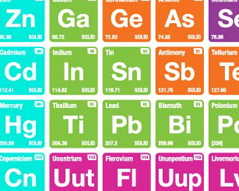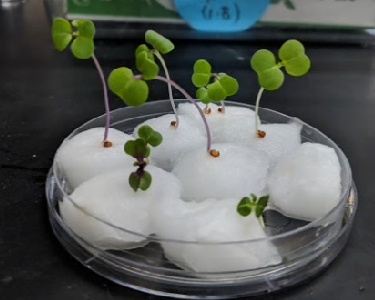Bouncing balls
Summary of task
Students were asked to design an investigation that determines the relationship between the drop height of a ball and its bounce back height. This task was part of a teaching and learning unit on transformation of energy where students explored how energy comes in a variety of forms, including kinetic, gravitational potential and chemical potential energy. During this unit, students also inquired into how transformations between different forms of energy are rarely 100 per cent efficient, as part of the initial energy is often converted into unintended forms of energy, such as heat or sound.
In this investigation, students were asked to determine the percentage of the drop height to which a ball returns on bouncing and whether that percentage varies for large or small drop heights. Students were made aware of the fact that the efficiency of the energy transformation depends on the material the ball is made of and that the bounce percentage is an indicator of this efficiency. They were asked to compare the efficiencies of balls made from a variety of different materials.
Students were asked to submit their results in a report (750 words maximum) in electronic form. They were asked to display the data for each type of ball in graphical form and use the slope of the line of best fit to determine the energy efficiency of each ball. They were further asked to discuss what happens to the energy within the system during a ball’s drop-and-bounce cycle and to calculate the maximum velocity of each ball on impact with the floor when dropped from a height of one metre.
